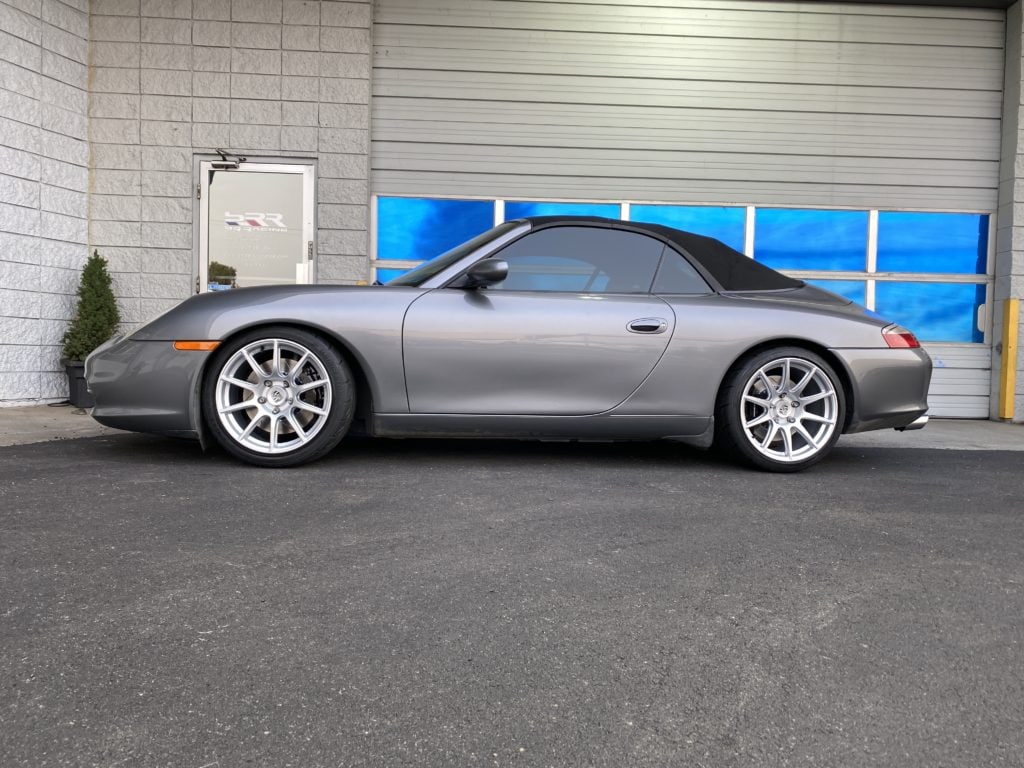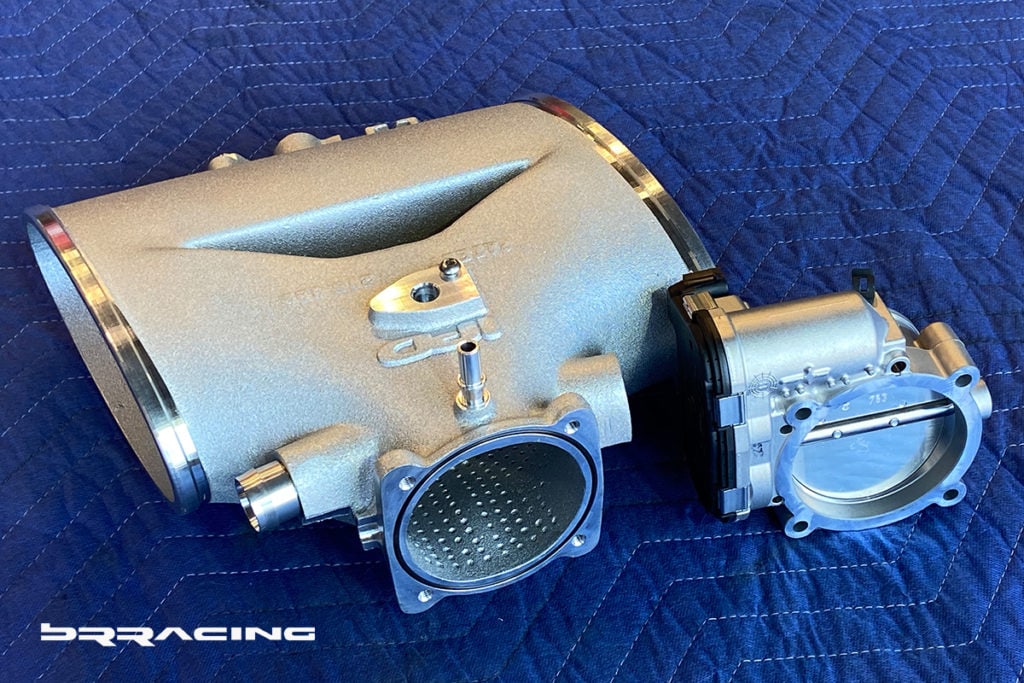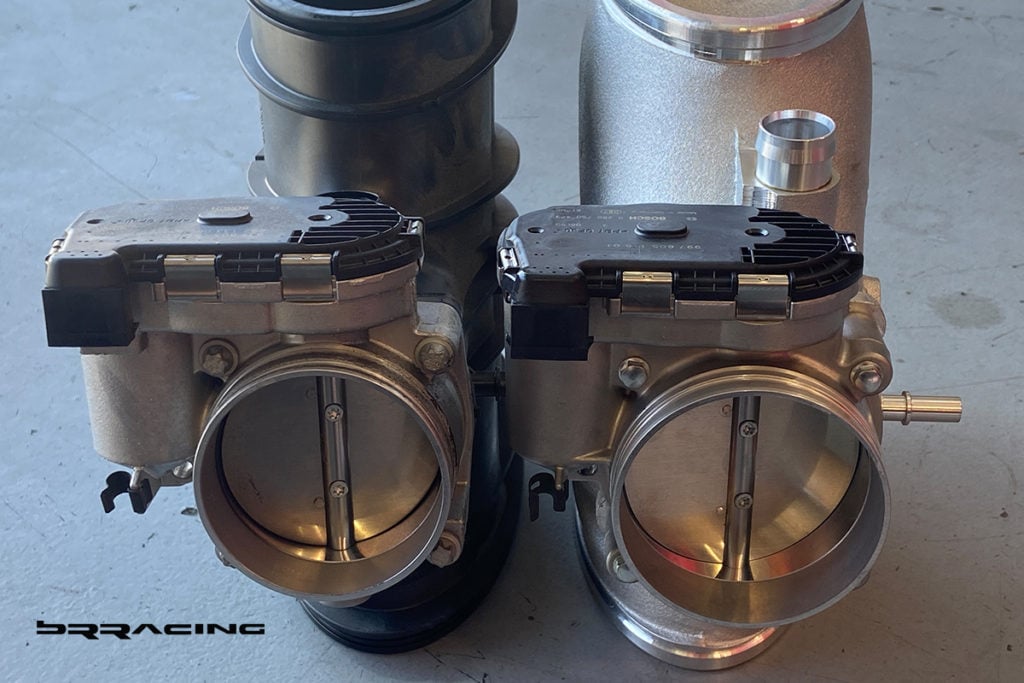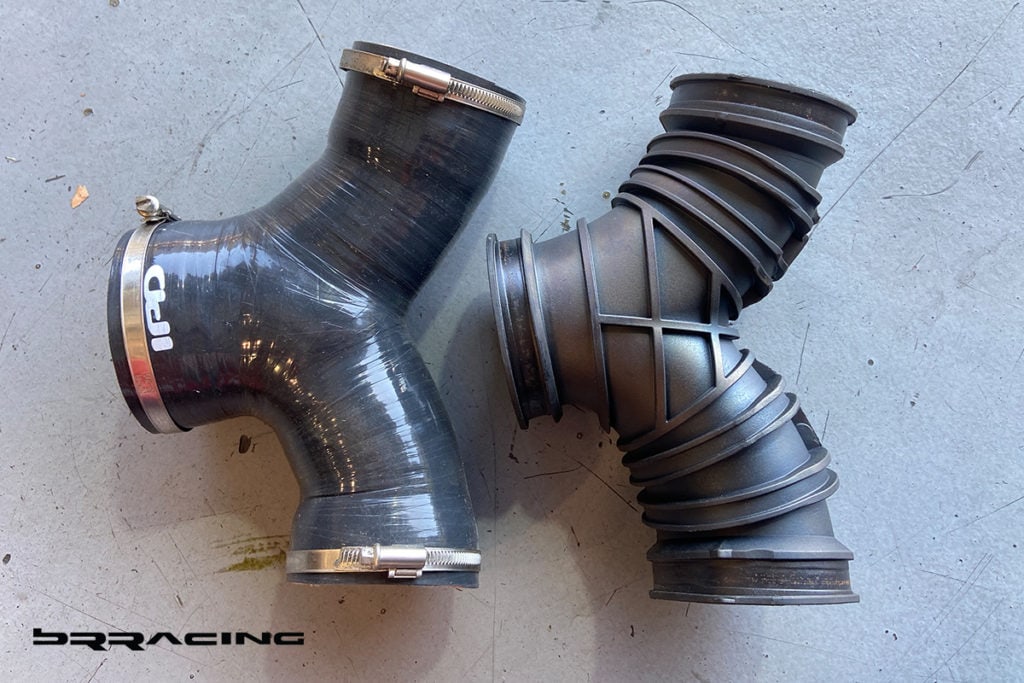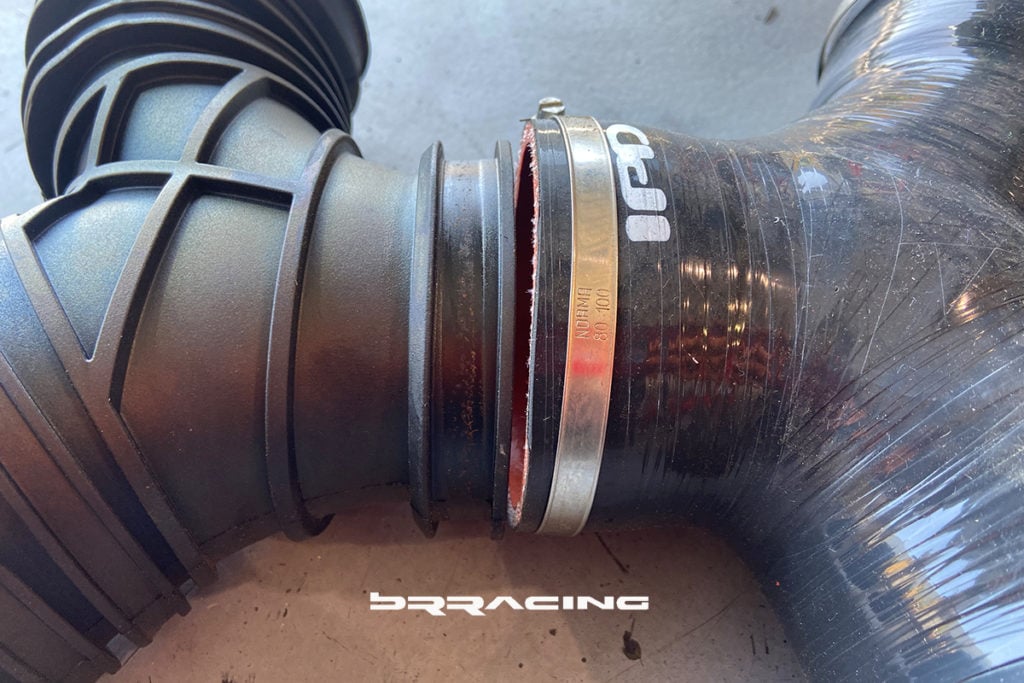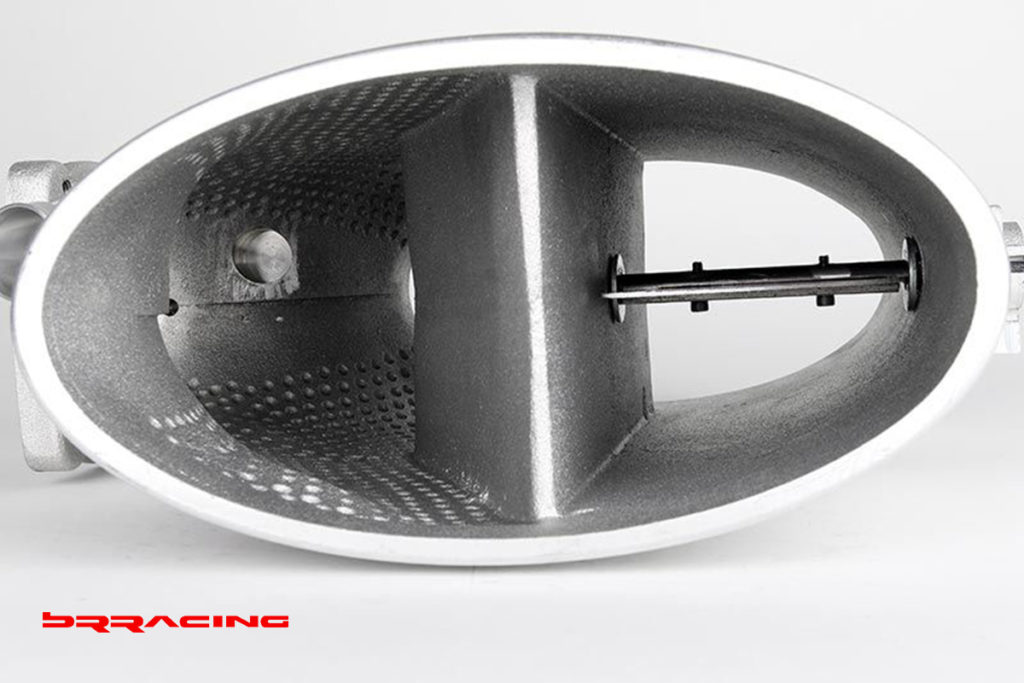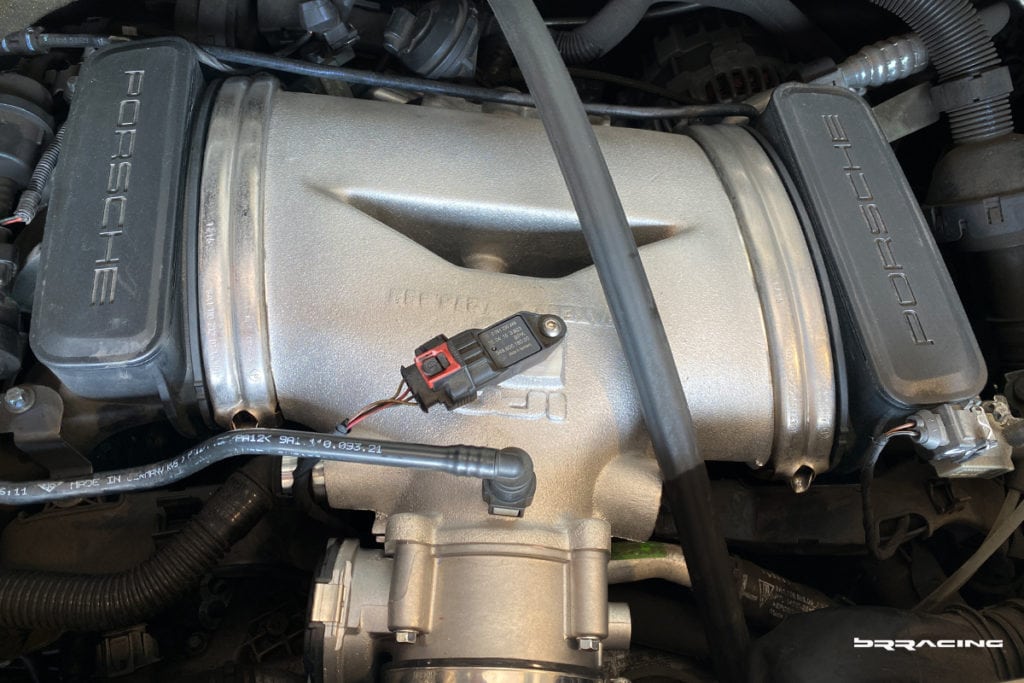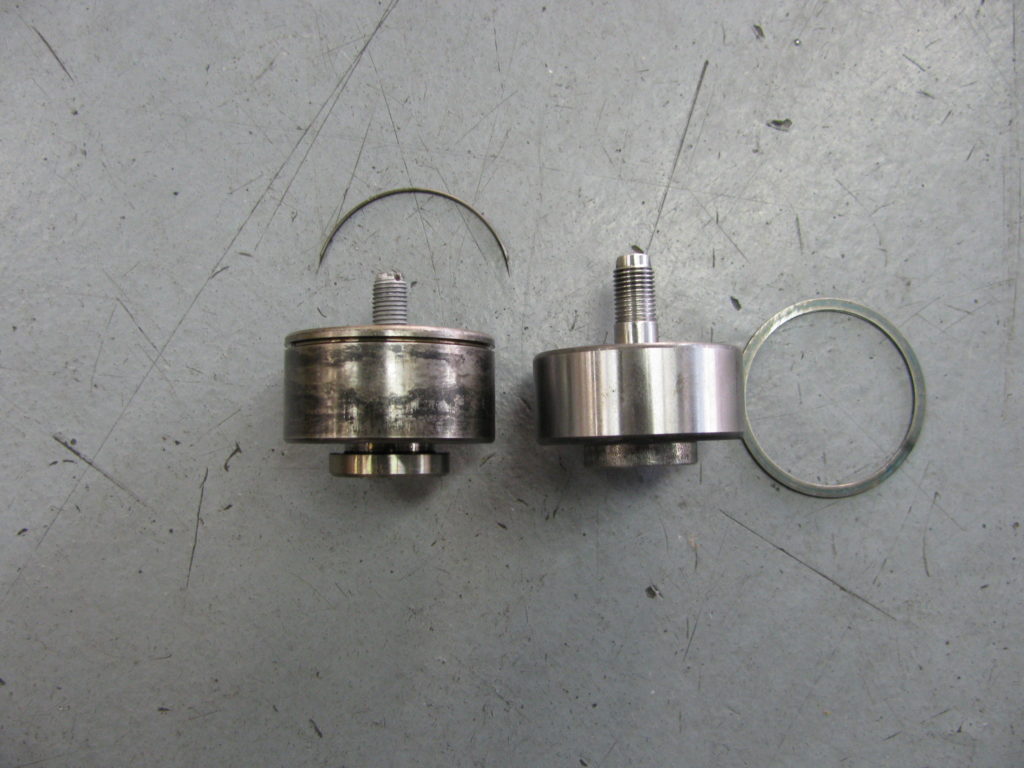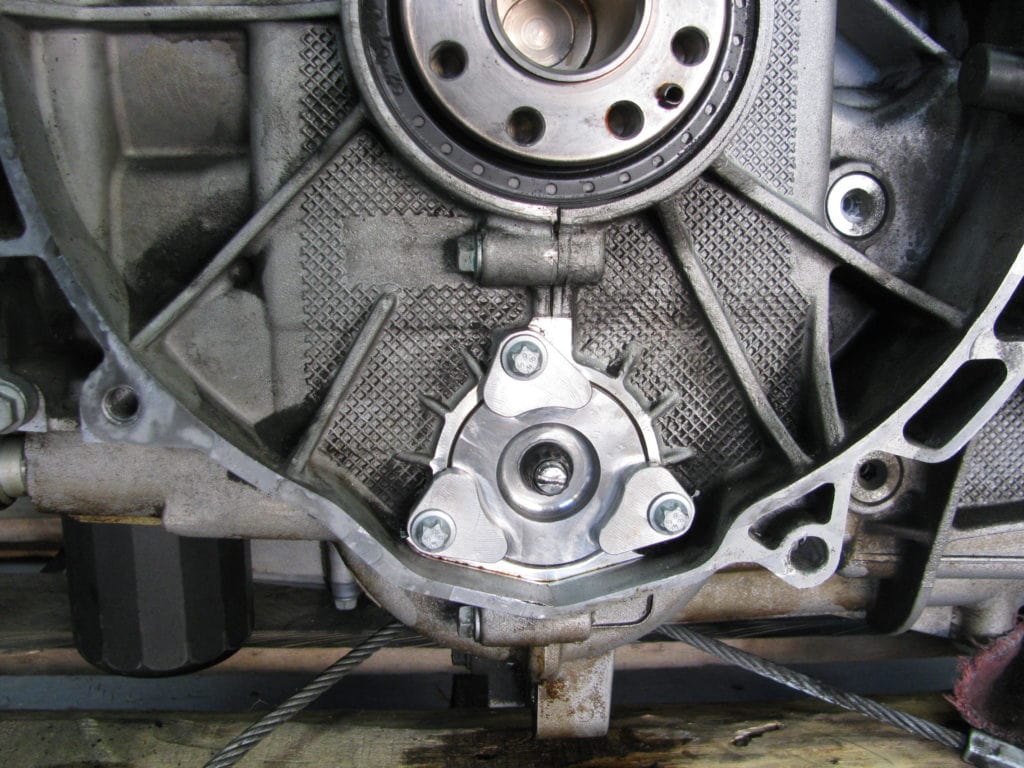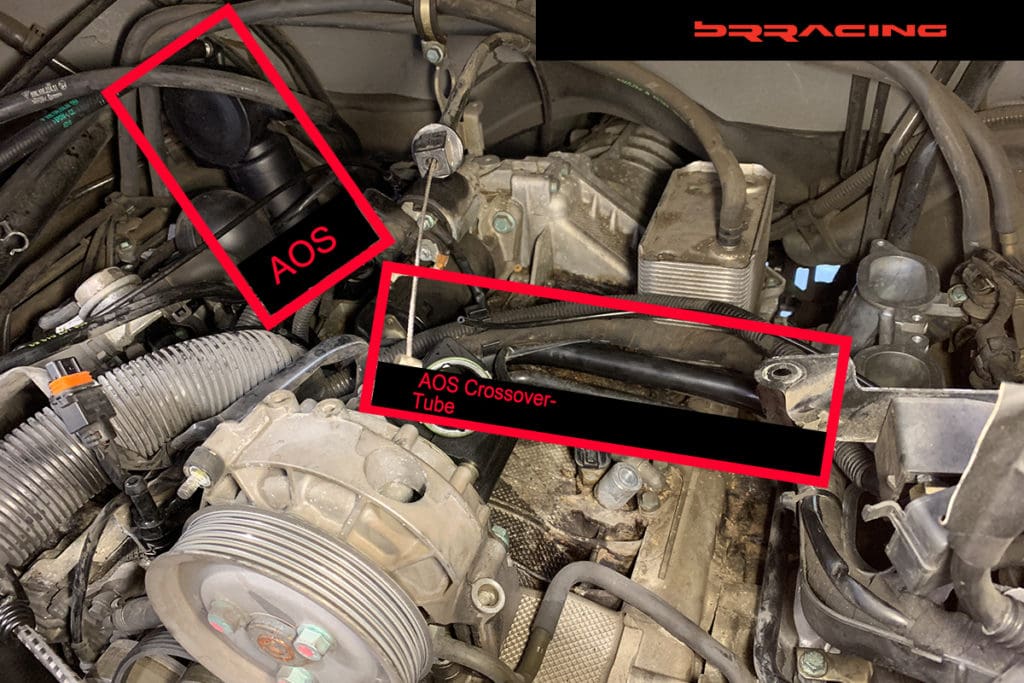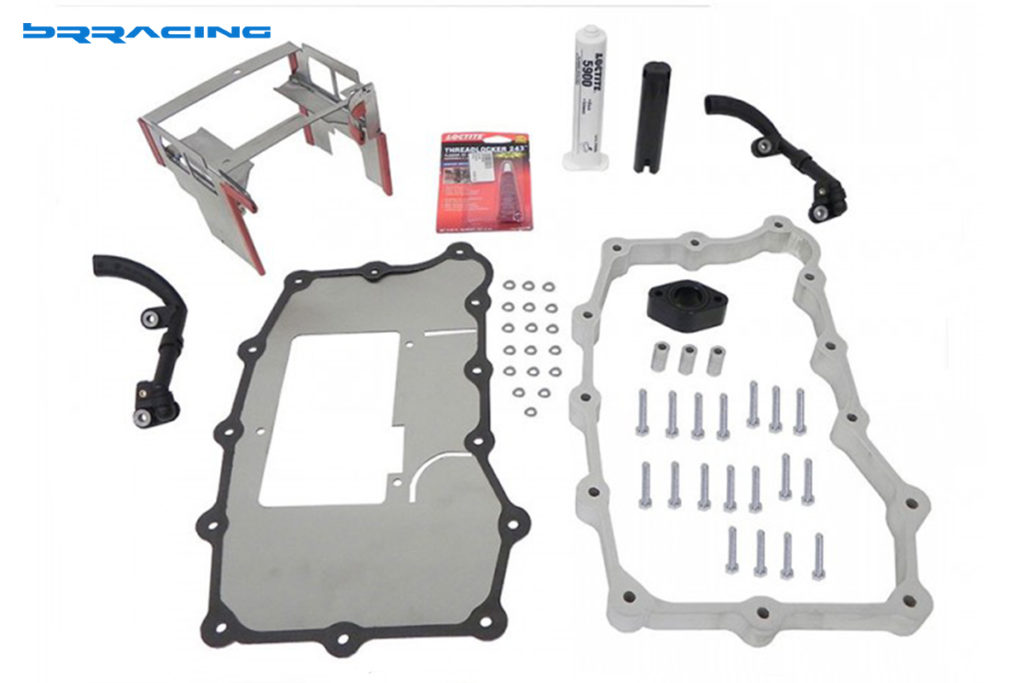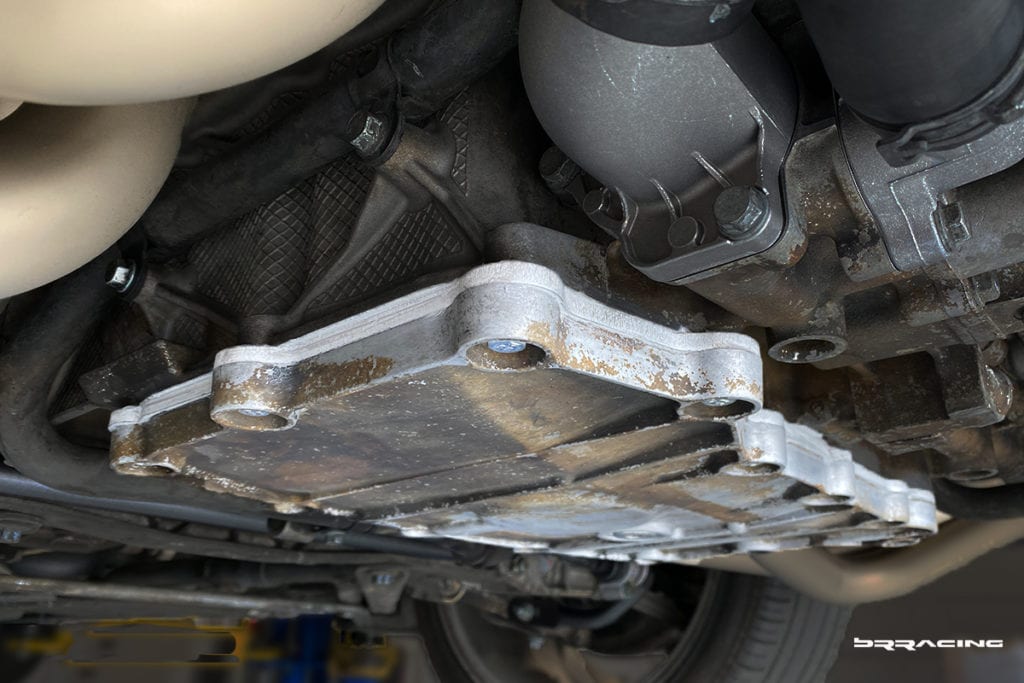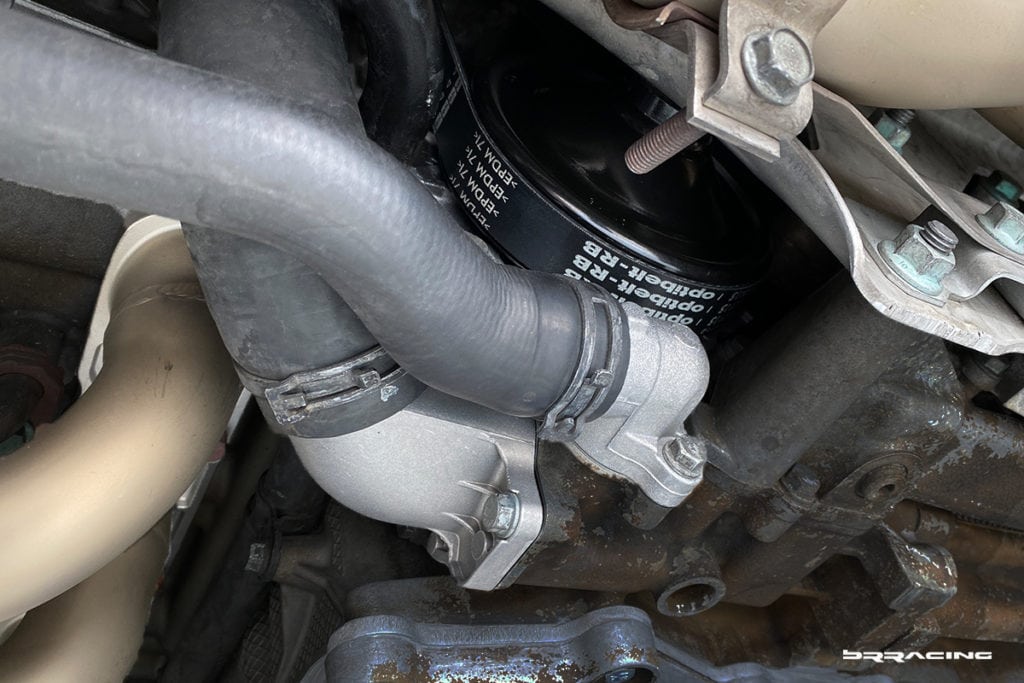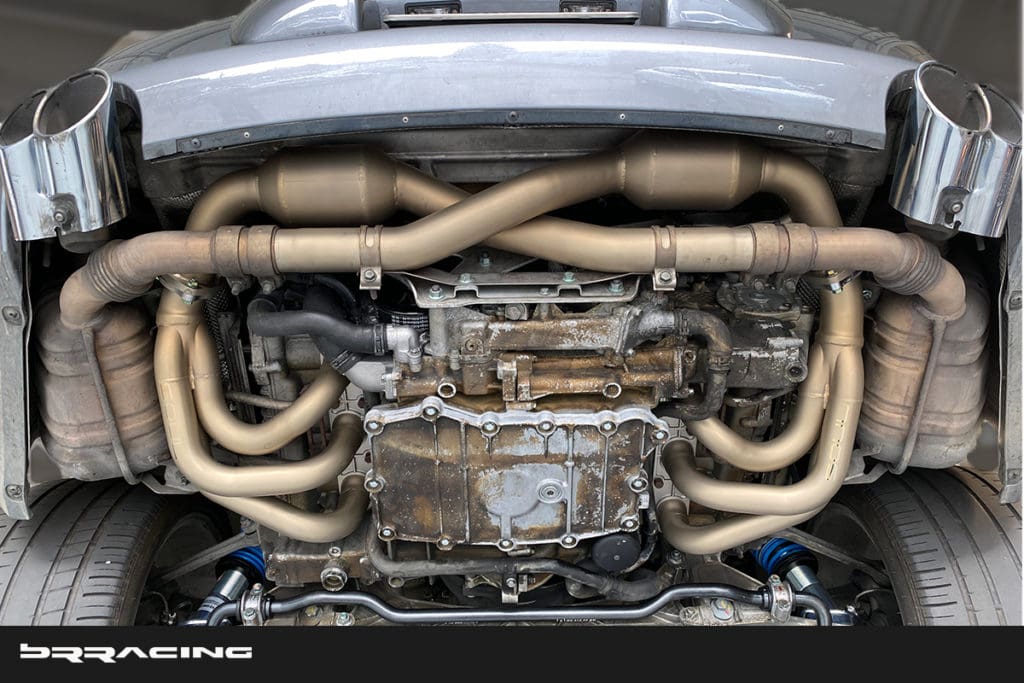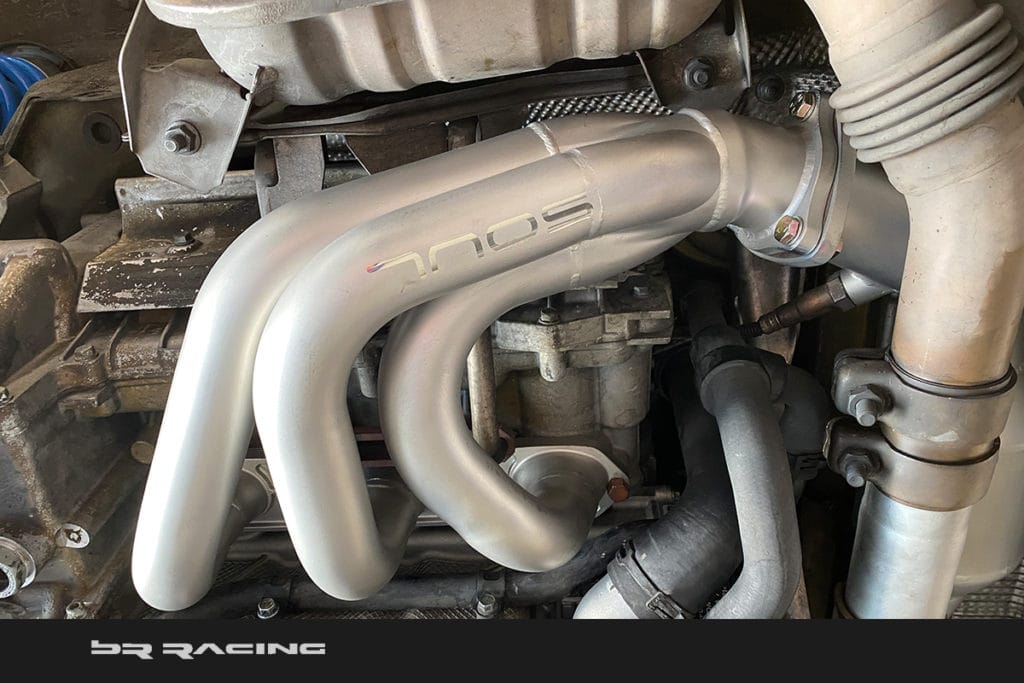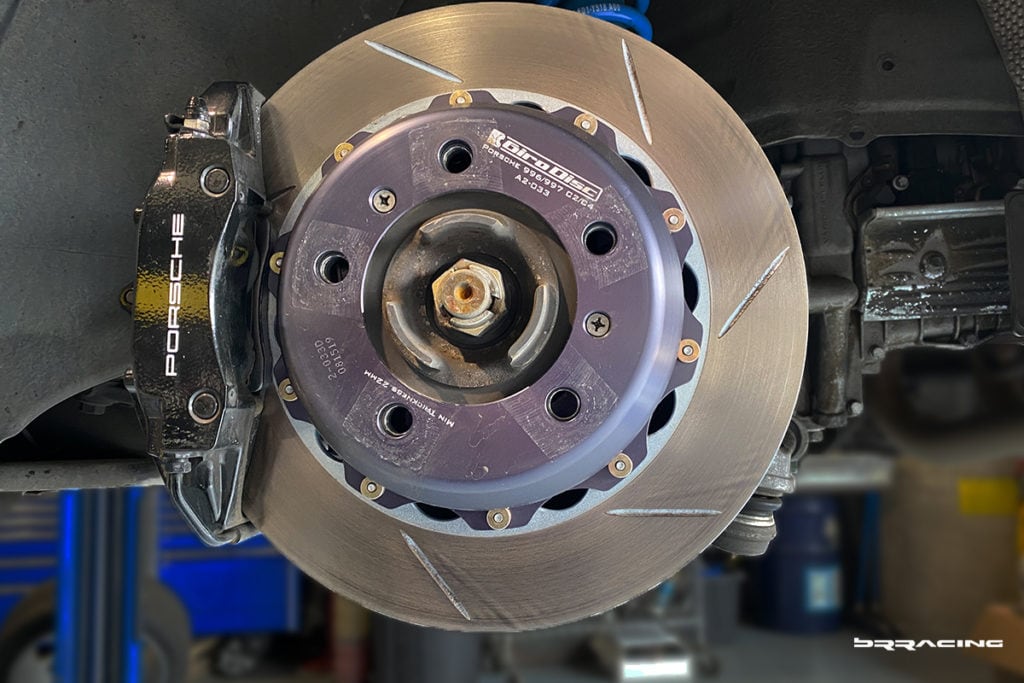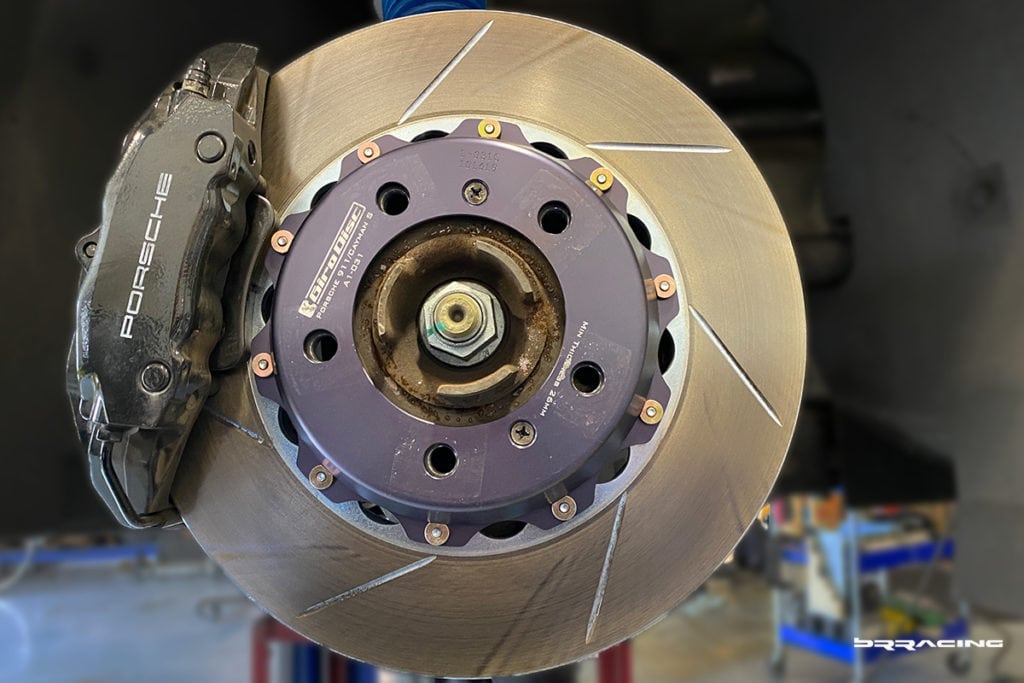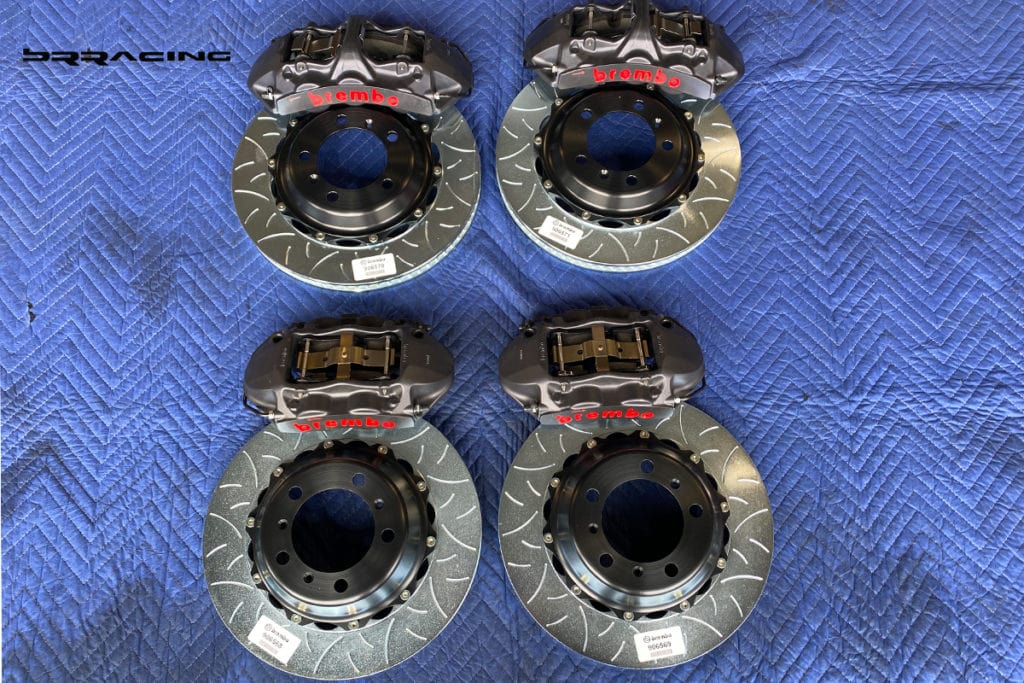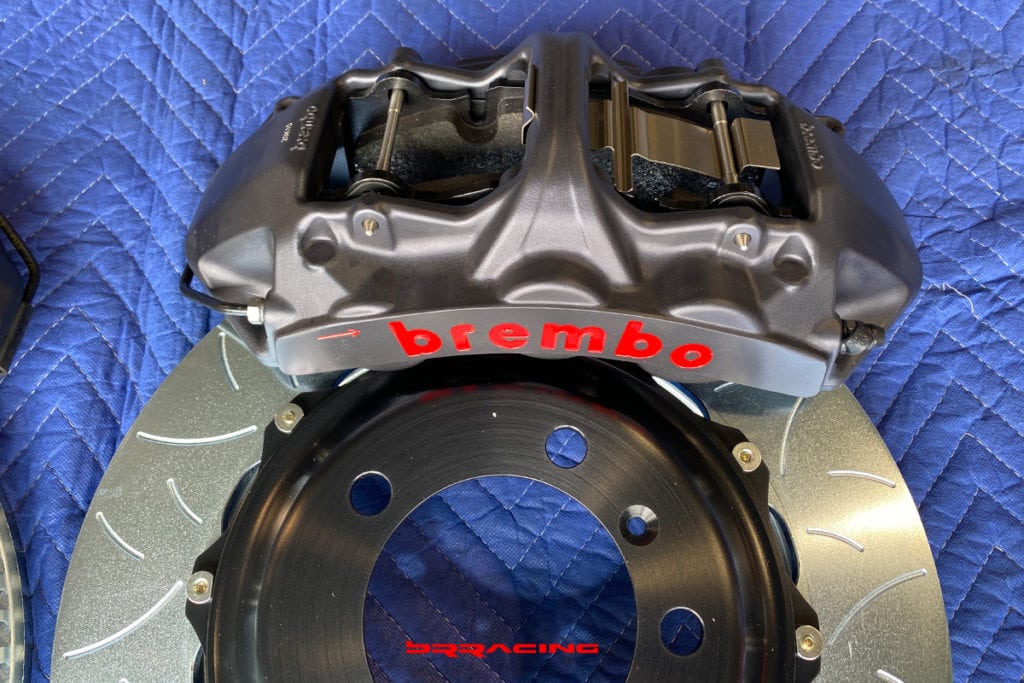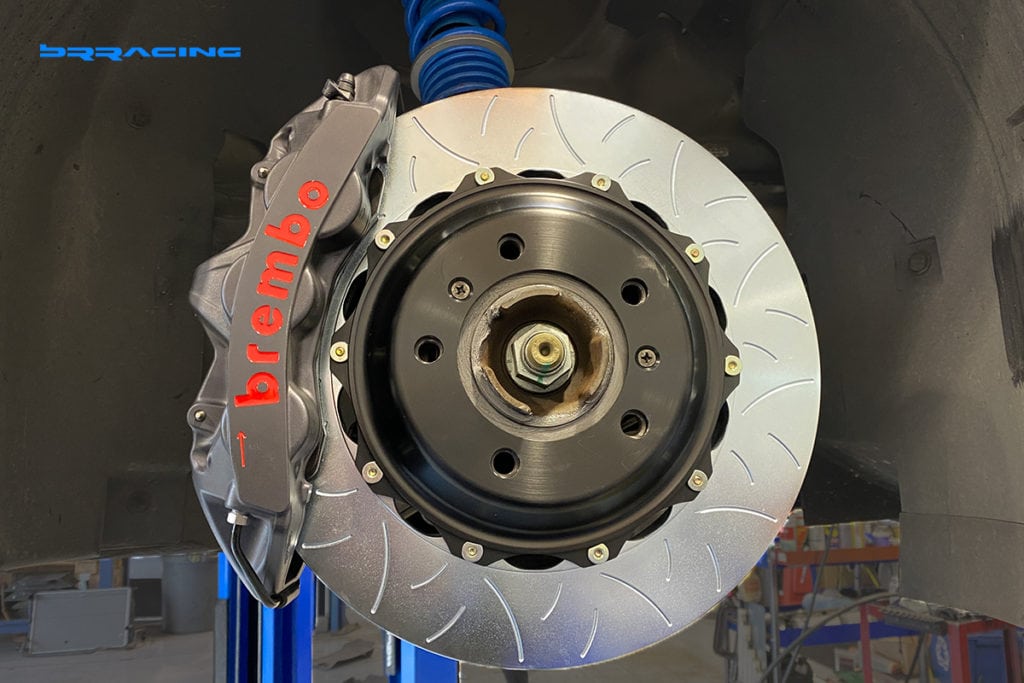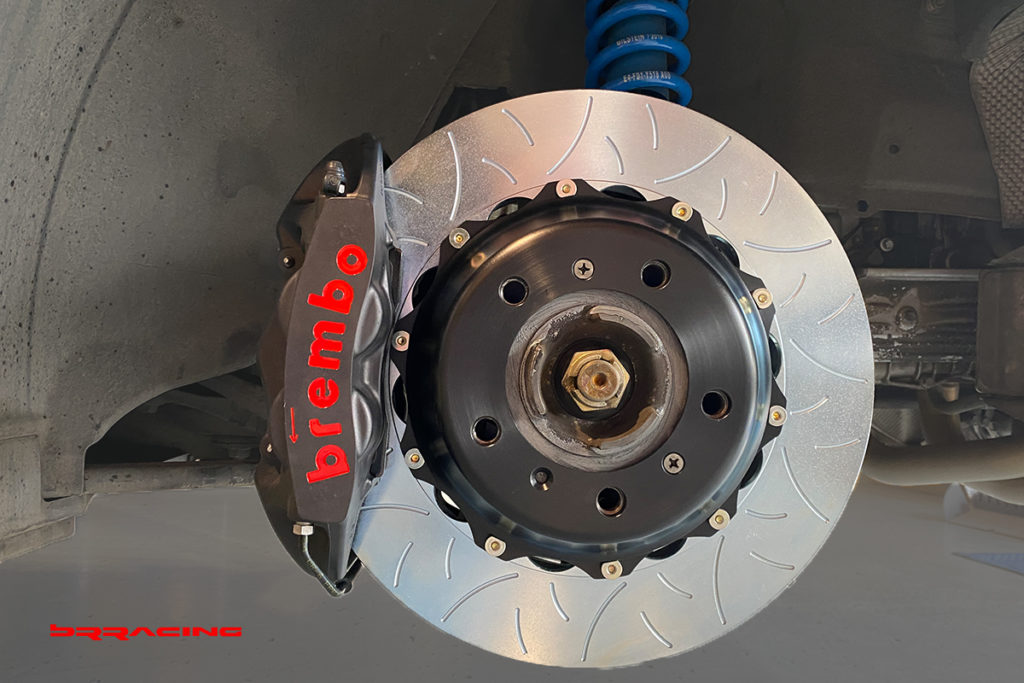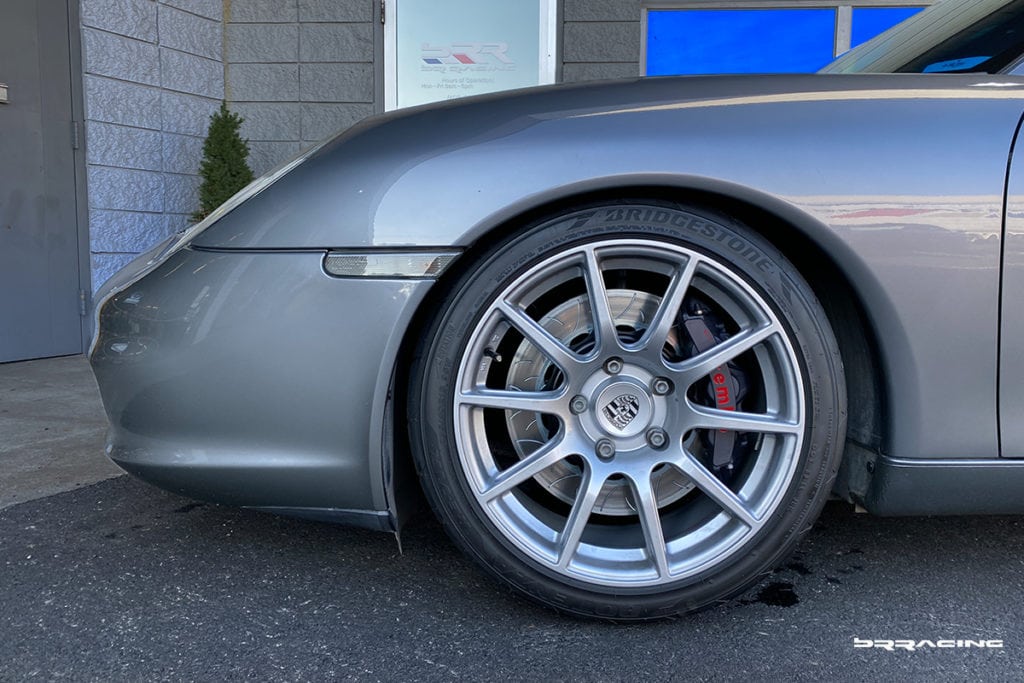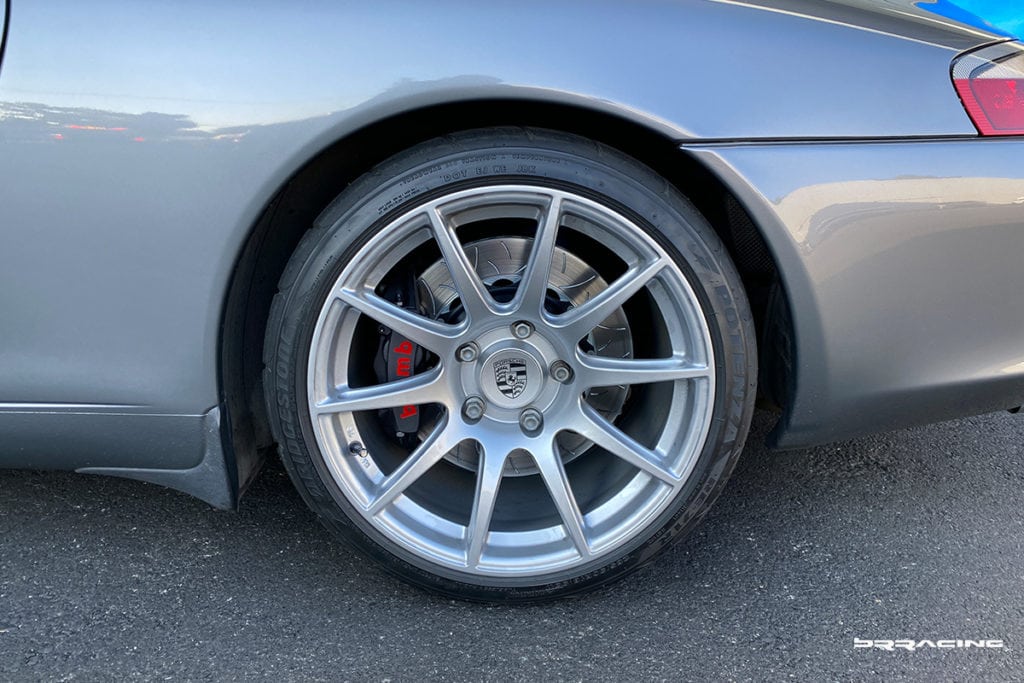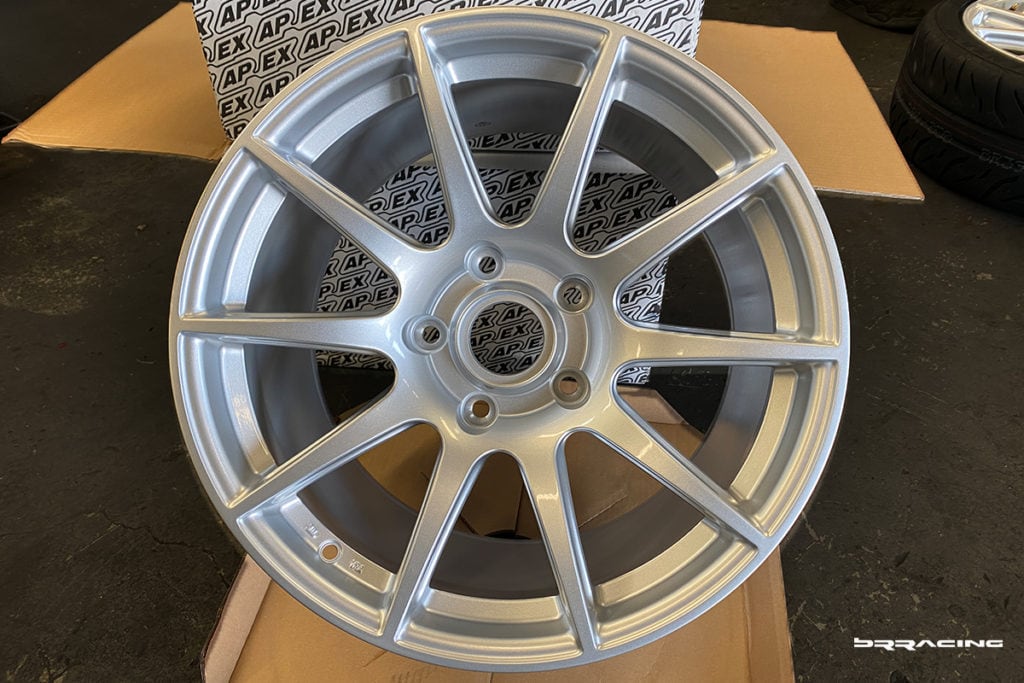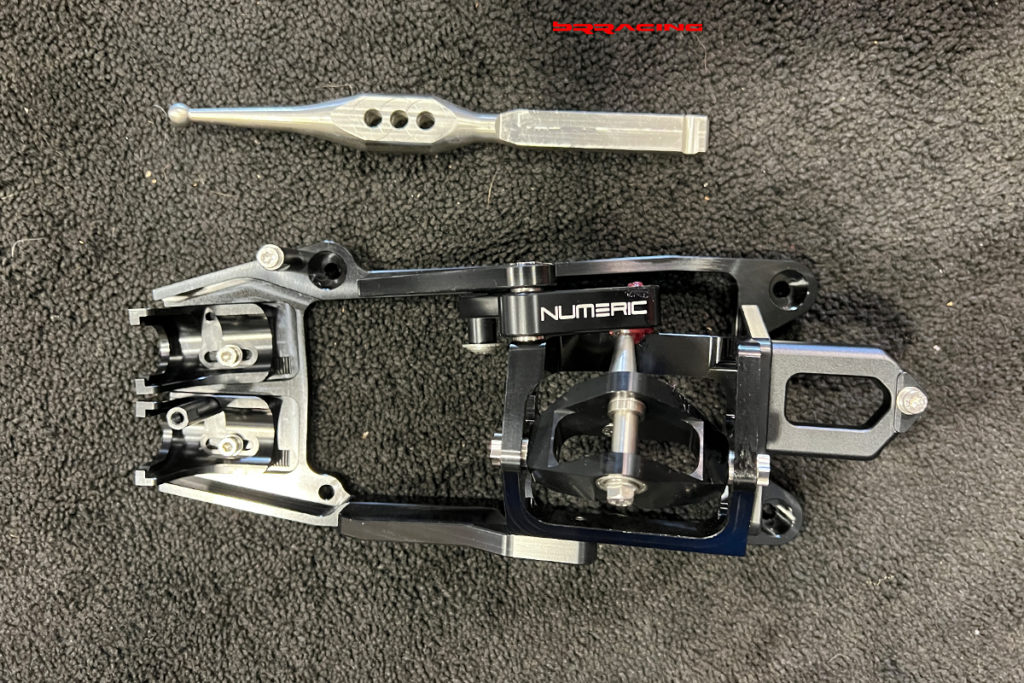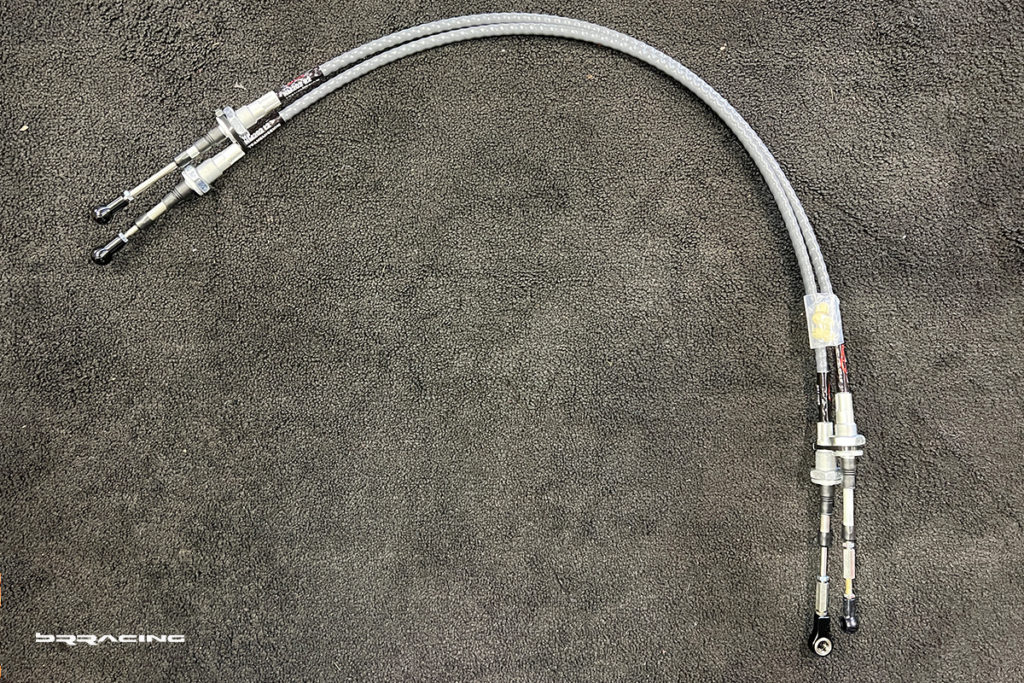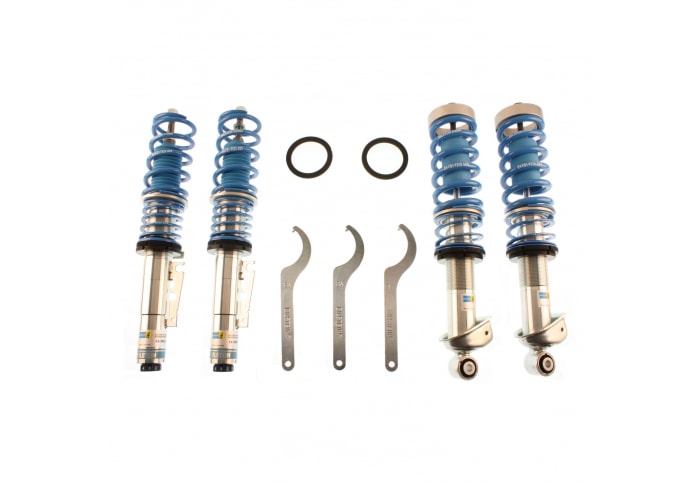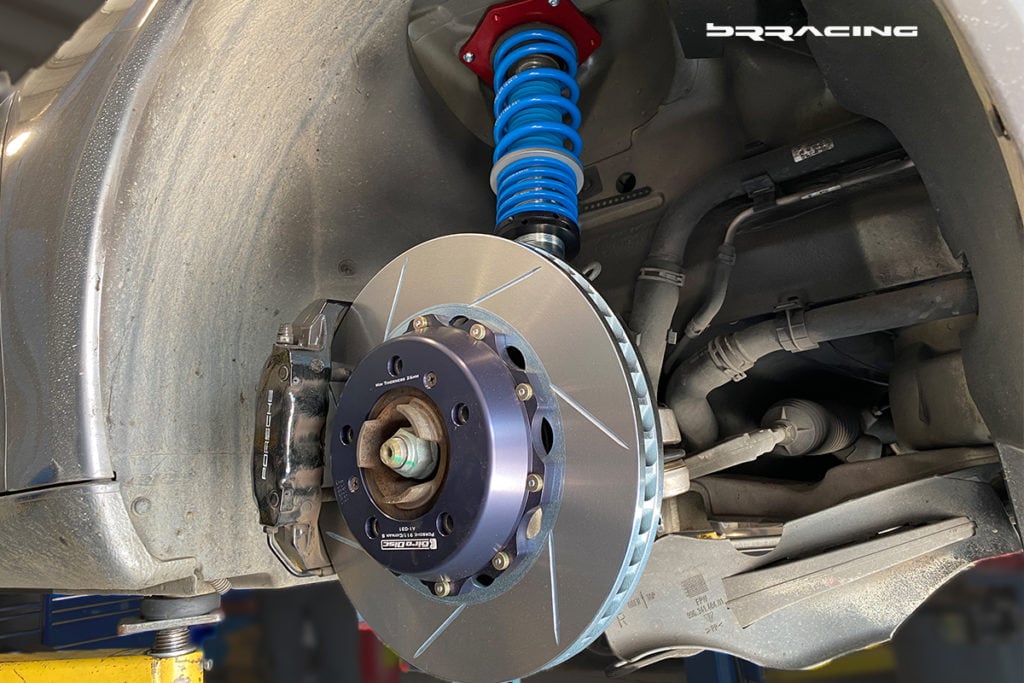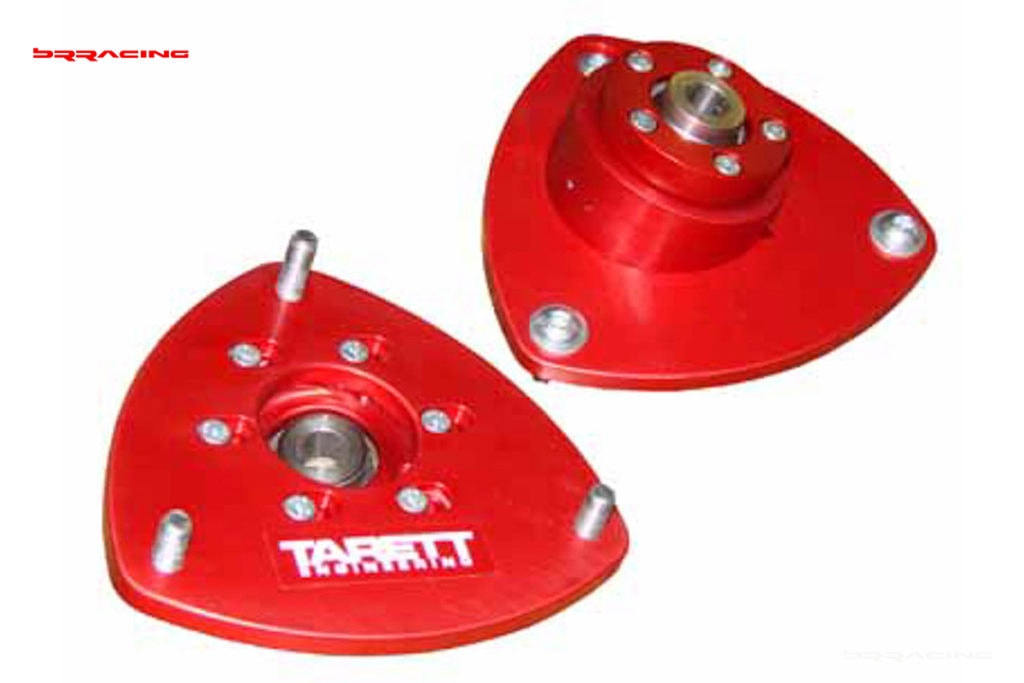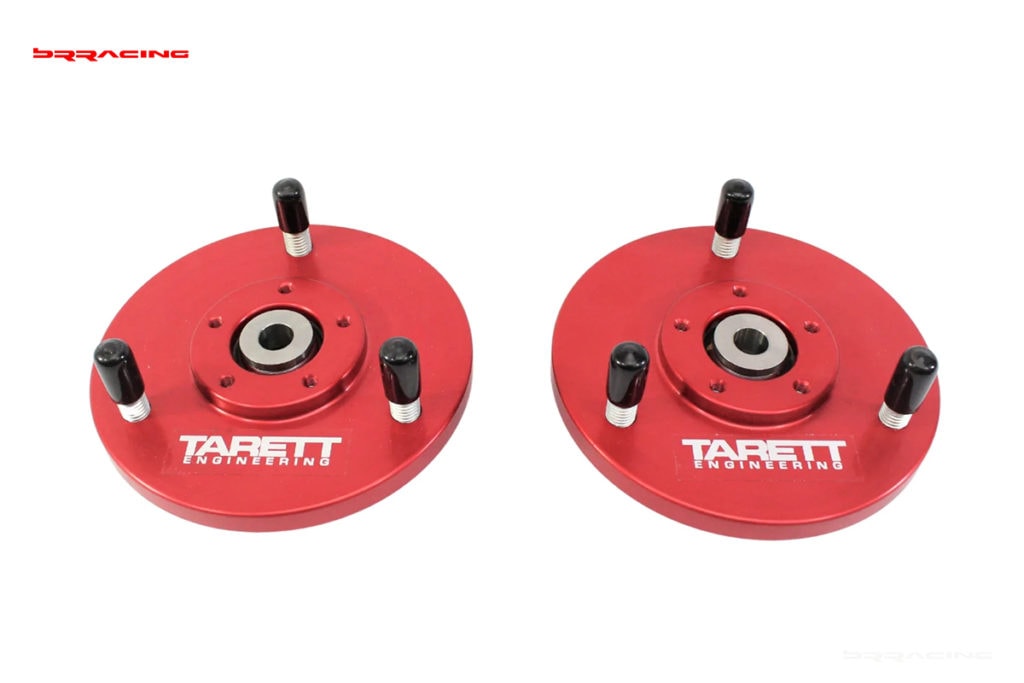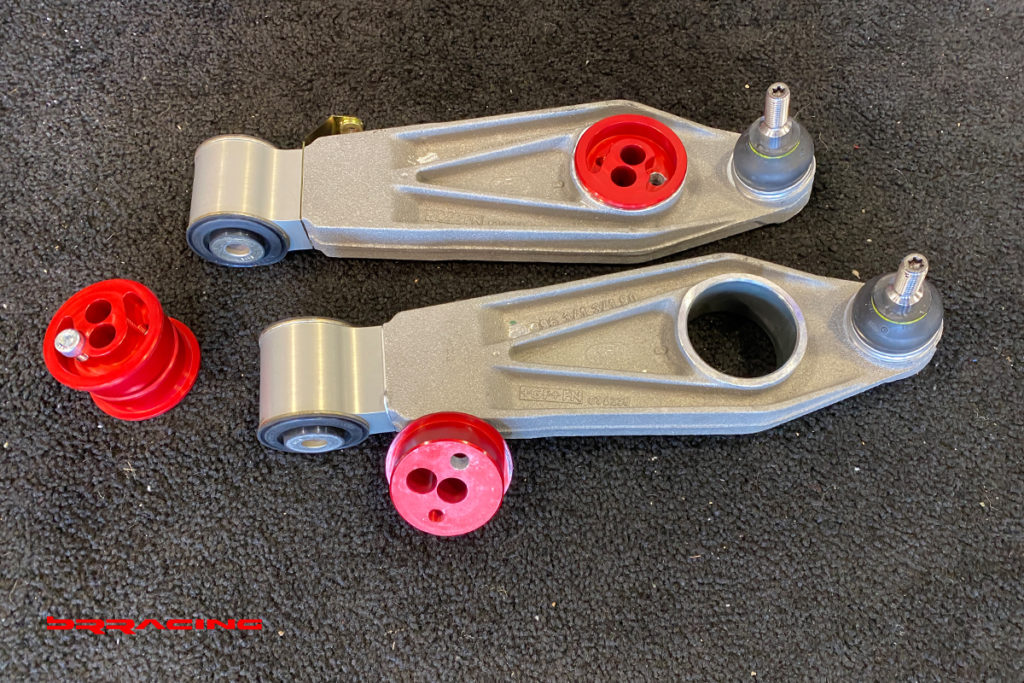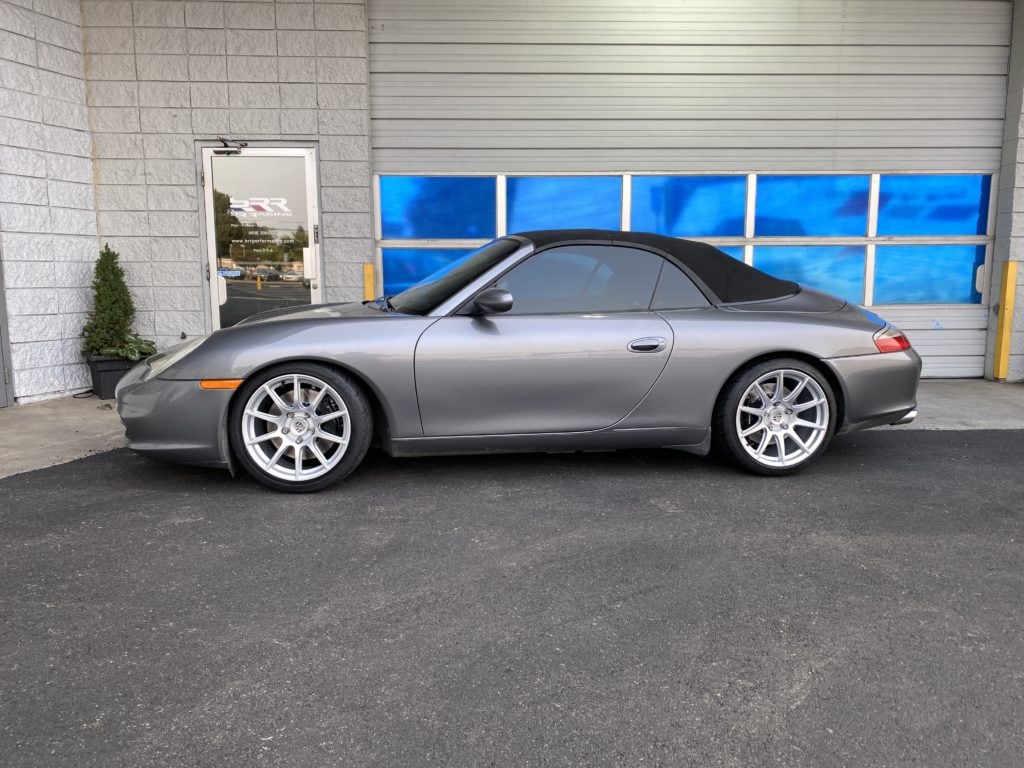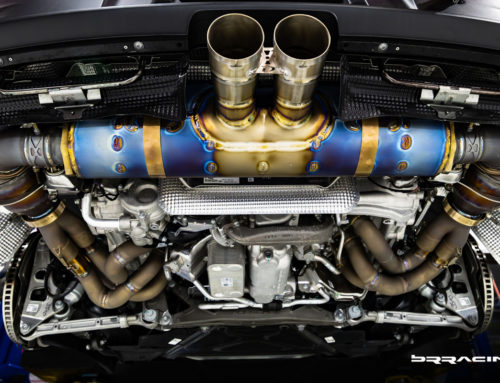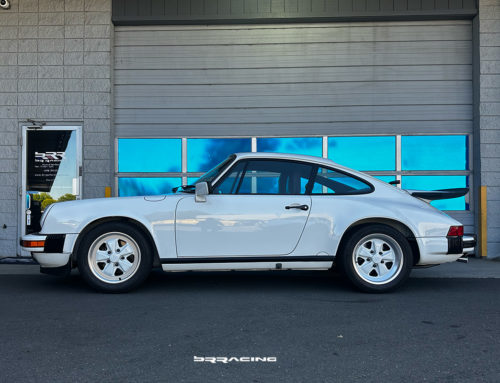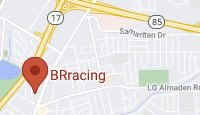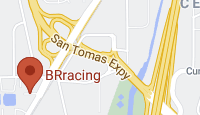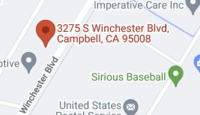Porsche 996 911 Carrera – Resto-Mod
The decision….do you abandon the current car you love for something new, or do you settle for something less, and keep what you have? Well, for some, it doesn’t have to be a hard decision, you can choose to make the old new, or the best of all worlds. Why forsake what you know, understand, enjoy, for the promise of something new? Why not just incorporate the new into the old, and keep all those things that you love (like the manual transmission, the direct feedback thru the steering, the tactile feeling of the seats, body roll, traction, responsiveness).
That was the objective here…to add to, embelish, upgrade, enhance all the things where benefits could be made, without sacrificing any of the core traits, looks, the car currently has. To do this well, all areas were considered, engine, suspension, brakes, exhaust, looks, interior. Let’s take a look at each one.
ENGINE
The Porsche 996 Carrera has a normally aspirated engine (meaning no turbo). Given that it is a Porsche, the engine is also very well engineered, designed, optimized. Therefore, not a lot of low hanging fruit to extract more power. The engine was slightly “detuned” for the 996 Carrera, so the opportunity for HP gain is in the areas where restrictions exist. The other view for the engine, if we are going to use the car for years to come, then while doing the upgrades, we should also design in reliability. Those were the two objectives, more power, more reliability.
ENGINE – POWER
The low hanging fruit for this engine mainly relate to the restrictions in the intake system. The intake, the throttle body, and the plenum. These are very small, tight, and don’t allow the engine to breathe as well as needed at the higher RPM. The “go to” parts here are the IPD Plenum, IPD intake tube, and the larger throttle body. Here are some pics where you can see the obvious gains to be had in terms of intake flow.
ENGINE – RELIABILITY
There are several “known” soft spots with the Porsche 996 Carrera engine. Obviously, one of them is the IMS bearing…but we had done that a long time ago, and we have never had any of our LN Engineering IMS upgrades ever fail again…so, no need to redo or upgrade.
The next “known” issue is the AOS (Air Oil Separator), located on the back side of the engine (separates the air and oil from the crankcase, then vents to the intake). The internal diaphram will wear out, tear, then the AOS doesn’t do it’s job, and air laden oil will get sucked from the crankcase into the intake manifold, drip down the intake runners, and pool at the intake port. When you start the engine, the pools of oil get sucked into the cylinders, get burnt off, and produce huge pools of smoke from the exhaust system (this is the tell-tale sign that the AOS has failed….if you get small amounts of oil at start up, you are likely entering the danger zone). The AOS diaphram cracks over time, so one of those devices that should be replaced, normally more than once. Since this car is nearing 20+ years old, the AOS was a candidate for replacement again, along w the adjoining hoses that harden and crack over time.
Another known weakness is the oil scavenging system, and oil capacity. If the car is going to be driven hard (at higher RPMs), then expanding the oil capacity has several benefits. Obviously, oil capacity….having more oil is always a good thing, but there is a secondary benefit of the larger oil capacity….cooling. The larger oil capacity allows the cooling system to work less overtime (there is an oil to water cooler as part of the cooling system as well)…therefore, the oil temperature is less, and the engine coolant temperature is less. A true “win / win” solution. This isn’t an adage where bigger is better, you don’t need to go overkill, you just want to expand the system. This is easily done via the deeper depth oil pan. More oil capacity, better capture system, extended length pickup.
Another common area of need, or failure area, is the water pump / thermostat. Since we are “freshening” the engine for long term reliabiilty, then the appropriate time to upgrade / replace the main engine cooling components.
EXHAUST
If you want more power from your engine (and c’mon, who doesn’t want more power?)….then another place to look is the exhaust system. Most modern exhaust systems (think anything from the year 2000 on)….flows well. So, there is not a lot of hidden power in upgrading an exhaust system, but everything helps…and the biggest side benefit is the sound. We guide customers to listen to a LOT of sound clips, videos before they choose an exhaust solution, as everyone’s choice of what sounds good is different…what tone, what volume….it is just different. We can guide customers to the most popular choices and brands, and which are better made….but then the choice is theirs. One of those that we believe both sounds good, looks great, fits perfect is SOUL Performance. They offer their exhaust solutions in pieces, so that you can either pick and choose as you desire (headers, sport cats, rear muffler), or you can get the whole thing. For this project, we didn’t want to be loud, we just wanted a tich more sound, and better flow….so we upgraded the sport cats and the headers.
BRAKES
You want the confidence, the stopping power, of a new sports car. You want the firm brake pedal. You want a brake that under hard application, you can modulate the brake pedal pressure and stopping power. You want confidence. Well, w the stock Porsche brakes, especially on a Carrera, you get none of that.
There are two approaches then to upgrading the brakes. Maximize the system you have, or replace everything. We did both to see what the results would be. Both work, it just depends on what level you are going to want or require of your brakes, and how you use them. Many people feel they need to treat their brakes w kindness. Those of us who drive aggressively, there is no “kindness” when we use the brakes. We’re there to demand everything they can give us, and give it to us NOW. The harder you are on the brakes, the more heat you generate, and therefore, how the brakes deal w heat is the root issue.
So, the first option is to use what we have, but to upgrade it. The best upgrade there is for brakes is to change to the GiroDisc 2-piece brake rotors. Everything about them is better. Bigger, stronger, harder (means they will last longer), better casting of the metal (therefore, less prone to cracking under lots of duress), and ultimately, surprisingly, more economical over the long term. The rotors are bigger in diameter, so you actually gain stopping power by replacing the rotors (the braking “moment” arm is therefore longer, therefore more braking torque when the pads are applied). You can match these rotors w whatever level pad you want (stock, sport, track), and they can take all the abuse you want to dish out. Here are the GiroDisc rotors installed:
The base Porsche Carrera has small brake calipers….only 4 piston caliper, and small pistons at that. Therefore, while braking stepped up one level, that was it. Not enough of a gain for the objectives for this customer. Time to take a bigger jump….the true “big brake kit” (BBK). We can talk through the various BBK manufacturers (Brembo, AP, Alcon, StopTech, etc)….and for a variety of reasons, we lean toward Brembo for street car upgrades.
Brembo (and some of the other brake manufacturers) have gone thru several caliper upgrades in the recent years. Getting the caliper stronger, lighter, and more serviceable. These are the Brembo GTS calipers. They are lighter, lighter pistons, better seals, and annodize for no color distortion over many heat cycles (the pretty, colored calipers will fade over time from the heat…so, red becomes pink, yellow becomes orange, black becomes grey, etc). The annodized calipers don’t change color, ever.
WHEELS
There is more to thinking about wheels at times than just looks….there is the technical side of a wheel (size, construction, weight, strength), but there is also the technical side of fitment (diameter, width, offset). There is a point here…that fitment is often needed to be considered when you think about upgrading brakes. You don’t want to make a wheel selection, and later, decide to do a brake upgrade, only to find out the new brakes won’t fit, or you can’t run the brakes you want due to lack of clearance in the wheel. Conversely, this is why we selected APEX wheels for this project. By far the best fitting wheel there is (APEX is the same choice for other makes, models as well…both offering flow formed wheels and forged wheels)…they allow the biggest tire to fit in the wheel well without modification, they offer the most clearance for big brake kits, they are strong, offer a great warranty, and offer multiple styles and color options. What’s not to like…plus, likely a better price point as well.
DRIVER EXPERIENCE / SHIFTER
As cars continue to evolve, one of the joys of the older cars is the manual transmission experience. However, while most enjoy rowing thru the gears, the gear shifter leaves lots to desire. There are two parts to the shifter experience – the shifter itself, and the shift cables. The stock shifter feels like a bag of mashed potatoes….nothing really there. This is due to all the rubber in the directional bushings of the shifter assembly. Both vertical and horizontal movement are vague, have play. Even the shifter assembly is plastic and moves around. All of this is crying for an upgrade. And the system of choice is the Numeric shifter solution. Solid, roller bearings all around, all movement is purposeful and direct. Just to make things even better, it’s adjustable in terms of “throw”.
The other piece is the cable set. The stock cable set has the same, soft, rubber bushings at each end. Therefore, any input you request, may….may get translated into a shifter / gear selection movement. These get replaced w the Numeric cable set, solid bushings at each end….any shifter movement is directly acted on, precise movement, you know what you wanted, you know what you get.
SUSPENSION
Back to the original objective….how to make an older “gen” car, act and behave like a new gen car. One of the prime areas for upgrades then is the suspension. We can’t change the fundamental design or geometry of the suspension (well, we could, but that was not in the cards for this project), so, instead we need to improve on each element (alignment (or the lack of the ability to adjust the alignment), the bushings, the mounts, the shocks, the springs)..the only thing we didn’t see necessary or highly beneficial to change were the sway bars.
Coil-Overs
For the most part, there are two considerations that drive the decision on springs, shocks, coil-overs. (1) Ride height adjustment or adjustabilty, (2) shock valving, or shock adjustability. If the need is just #1…then either a set of sport springs or a set of “height adjustable springs” (HAS) would be the right decision. But, if the need is #1 and #2, then a true set of coil-overs is the right decision. Next, if we have an adjustable shock, we need to be able to adjust it. That may sound silly, but there are many coil-overs out there that are adjustable, but bury the adjustment knob to where, once installed, you can never adjust it. Since this was not going to be a track car, we didn’t need the most aggressive shock valving…we didn’t want harsh, we wanted finesse.
The Bilstein PSS10 is the perfect choice for this application. Solid valving, but the key feature is the big adjustment knob on the bottom of the shock. Don’t like the ride quality, don’t like the handling, then easily change it.
Shock Mounts
If we are doing the shocks, and given the age of the car, then the mounts should be changed as well. Since we are trying to bring “better” to the equation in all that we do, then the front upper shock mount should be of a different type / bushing (without introducing harshness, noise, or vibration into the equation)…and if possible, add to the alignment solution as well. The front mount (Tarett) is just that….bigger, more surface area, stronger, and more solid bushings, plus it adds to the negative camber in the front alignment…a very good thing.
The rear mounts aren’t part of the alignment solution, but they do add in all the other elements (bigger, stronger, better bushing material for more direct response from the suspension).
On most cars, almost all manufacturers do NOT design in suspension adjustability (like camber, caster) in the front suspension. So, if we want the setup of the car to more mimic more modern cars, and to take advantage of the new technology in the newer tires, then you need adjustability in the front suspension. Enter Porsche GT3 2-piece front lower control arms. We are almost adamant that the inner GT3 lower control arm be the stock rubber type bushing. The other bushing, however, the thrust arm bushing, or caster adjustment bushing, needs to be solid, and adjustable. There are a variety of options here, but since this is again a street car, not a track car, either the Elephant Racing or Tarett bushings are solid choices. If this were a track car, then only the RSS version would be used.
And…..there you have it. An amazing Porsche 996 911 Carrera, now modernized, made better in every way needed. The new cars have nothing on this car…great looks, great brakes, amazing handling, engaging, better performance, and tingling sound. Just what the customer wanted.
